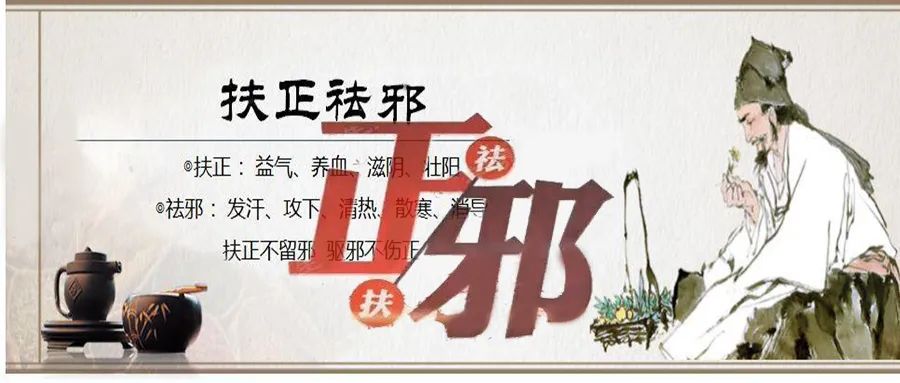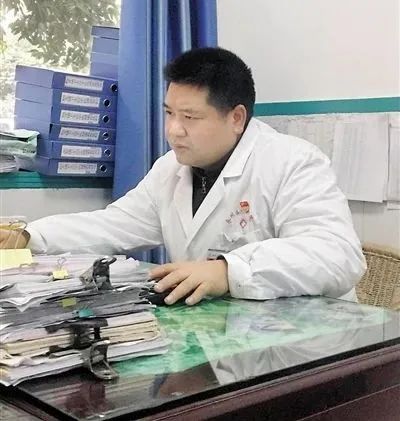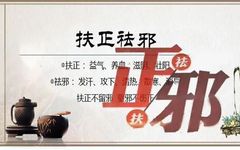New Perspectives on Supporting the Right Qi and Expelling Pathogenic FactorsProfessor Ma Youdu, in his article “Supporting the Right Qi and Expelling Pathogenic Factors,” delves deeply into the concepts of supporting the right qi (zheng qi) and expelling pathogenic factors (xie qi). He posits that the evolution and outcome of diseases are determined by the interplay between the right and pathogenic qi. When the right qi prevails, the disease diminishes; when the pathogenic qi is strong and the right qi weakens, the disease progresses. Therefore, supporting the right qi and expelling pathogenic factors to alter the balance of power between the two becomes a fundamental principle guiding clinical treatment, and its importance is evident.

Professor Ma believes that the treatment principle of supporting the right qi and expelling pathogenic factors is akin to warfare; sometimes it requires mobilizing troops for a major offensive to eliminate the enemy, while at other times, it is necessary to prepare supplies and reinforce one’s own forces for future battles.Only in this way can ultimate victory be achieved. In this sense:“Treating disease is like waging war.”
When should pathogenic factors be expelled? When should the right qi be supported? How should expelling pathogenic factors and supporting the right qi be coordinated?Generally speaking, when the pathogenic qi is strong and the condition is solid (shi), it is necessary to expel the pathogenic factors using the method of “expelling the solid” (shi ze xie zhi). If the state is one of deficiency (xu) due to the depletion of vital essence (jing qi), then the right qi should be supported, and the method of “supplementing the deficiency” (xu ze bu zhi) should be employed. Thus, in terms of pharmacological therapy, expelling pathogenic factors involves using purging methods to treat solid conditions, while supporting the right qi involves using tonifying methods to treat deficient conditions. For different solid conditions, one may choose from methods such as releasing the exterior, clearing heat, purging, expelling dampness, resolving stagnation, promoting blood circulation, and eliminating parasites; for different deficient conditions, one may select from methods such as tonifying qi, nourishing blood, enriching yin, and assisting yang. Different organs may exhibit various solid or deficient conditions, necessitating the use of more specific purging and tonifying methods, such as clearing the liver and gallbladder or warming and tonifying the spleen and kidneys.

However, in clinical practice, it is often observed that the condition is not purely one of solid pathogenic factors nor purely one of deficient right qi, but rather a complex state of solid pathogenic factors and deficient right qi. Solely using purging methods to expel pathogenic factors may further damage the right qi, while solely using tonifying methods to support the right qi may exacerbate the pathogenic influence. Only by balancing the expulsion of pathogenic factors and the support of the right qi, employing both purging and tonifying methods, can one achieve a comprehensive treatment. For example, a person with deficient right qi who also has a cold requires both releasing the exterior to expel pathogenic factors and tonifying to support the right qi. Thus, ancient practitioners summarized methods such as tonifying qi while releasing the exterior, nourishing blood while releasing the exterior, enriching yin while releasing the exterior, and assisting yang while releasing the exterior, and created famous formulas like Shen Su Decoction, Scallion White Seven Flavor Decoction, Modified Wei Rui Decoction, and Mahuang Fuzi Xixin Decoction, which are used for various cold cases in individuals with deficiency, often achieving good therapeutic effects.Expelling pathogenic factors and supporting the right qi are not equal in weight; rather, they should be prioritized based on the severity of the solid pathogenic factors and the deficiency of the right qi, either emphasizing the expulsion of pathogenic factors while supporting the right qi as a secondary measure, or emphasizing the support of the right qi while expelling pathogenic factors as a secondary measure.For cases where solid pathogenic factors predominate, referred to as “two solids and one deficiency,” the focus should be on expelling pathogenic factors while also supporting the right qi. For example, in cases of externally contracted febrile diseases, where heat binds the stomach and intestines, causing abdominal distension and pain, and constipation, while the pathogenic heat dries and injures yin, leading to symptoms such as dry mouth, cracked lips, and a dry tongue coating. This solid pathogenic condition leads to yin deficiency. If one solely uses purging methods, although it may relieve the heat binding and prevent further injury to yin, the already depleted body fluids are difficult to restore. Only by adopting a treatment strategy that primarily focuses on purging the pathogenic factors while also nourishing yin and supporting the right qi, such as using the formula Zengye Chengqi Decoction, can good results be achieved.For cases where the right qi is primarily deficient, referred to as “two deficiencies and one solid,” the focus should be on supporting the right qi. For example, in cases of internal injury from prolonged illness, where the spleen qi is weak and the transformation and transportation functions are impaired, leading to symptoms such as abdominal distension, lack of appetite, loose stools, and fatigue. This is due to spleen deficiency causing food stagnation. If one solely uses methods to resolve stagnation, although it may temporarily relieve the food accumulation, the spleen’s transformation and transportation functions have not been restored, and the condition will soon recur. Only by adopting a treatment strategy that primarily focuses on tonifying the spleen and supporting the right qi while also resolving stagnation and expelling pathogenic factors, using formulas like Si Junzi Decoction with Hawthorn and Malt, can more stable therapeutic effects be achieved.

It is important to note that not all conditions with both deficiency and solid pathogenic factors require both purging and tonifying. Sometimes, solely expelling pathogenic factors or solely supporting the right qi can be effective. There are mainly two situations:One situation is when the solid pathogenic factors are very strong and the deficiency is mild; in this case, it is sufficient to expel the pathogenic factors without needing to support the right qi. As the pathogenic qi dissipates, the mild deficiency of the right qi will naturally recover. For example, in cases of externally contracted febrile diseases, where the patient has high fever, profuse sweating, and great thirst, with a strong pulse, indicating that the pathogenic heat is very strong, but the patient also feels dizzy and fatigued, suggesting slight deficiency of the right qi. In this case, using Baihu Decoction to clear and drain the pathogenic heat will allow the patient’s strength to gradually recover as the pathogenic factors dissipate. This illustrates the principle that “expelling pathogenic factors can also support the right qi,” also known as “borrowing the offensive to supplement,” as Zhang Zihe stated in “Rumen Shiqin”: “First attack the pathogenic factors; when the pathogenic qi is gone, the right qi will naturally recover, and there is true supplementation within the supplementation.”The other situation is when the right qi is severely deficient and the external pathogenic factors are mild; in this case, it is sufficient to support the right qi without needing to expel the pathogenic factors. As the right qi strengthens, it can overcome the pathogenic factors and lead to self-recovery. For example, when epidemic toxins invade the body and cause dysentery, if the right qi is weak, the damp-heat dysentery often transforms into a cold dysentery. In this case, rather than using detoxifying agents to treat dysentery, one should use formulas like Buzhong Yiqi Decoction to support the right qi. As the right qi strengthens, it can overcome the residual epidemic toxins and lead to recovery. This illustrates the principle that “supporting the right qi can also expel pathogenic factors,” also known as “borrowing supplementation for offense,” where “there is an offensive intention within the supplementation.”It is also necessary to consider the order of purging and tonifying. Ancient practitioners held the view that for cases of deficiency followed by solid conditions, it is advisable to first tonify and then purge; for cases of solid conditions followed by deficiency, it is advisable to first purge and then tonify.However, in clinical practice, one should not rigidly adhere to the order of deficiency and solidity but should determine the priority of purging or tonifying based on the degree and urgency of deficiency and solidity. For cases of deficiency followed by solidity, one should not stubbornly insist on tonifying first; generally, one should first expel the pathogenic factors. As Danbo Yuanzhen stated: “If a person is usually deficient, with yin declining and yang prevailing, and suddenly contracts a pathogenic factor, the two yangs clash, resulting in a solid condition; this is a case of deficiency with some solidity. The treatment method should not be solely cooling to relieve heat, nor should it be solely purging to eliminate stagnation. However, the previous deficiency cannot be neglected, so one may either use a gentle purging method or stop the purging after one dose. Ancient philosophers believed that for this condition, one should first treat the deficiency and then treat the solidity, which may not be entirely correct. Generally, if the pathogenic factors are not resolved, one cannot receive supplementation; if one supplements while there are pathogenic factors, it merely adds to the obstruction. Moreover, how can the long-standing deficiency be restored by temporary supplementation?”Of course, for individuals with extremely deficient right qi, in order to restore the right qi and address urgent needs, one may have to temporarily prioritize supporting the right qi, so Danbo Yuanzhen also stated: “If the deficiency is severe, one may have to temporarily resort to supplementation; once the deficiency is restored, one can then consider purging.” For cases of solid conditions followed by deficiency, one should not rigidly adhere to purging first. If a disease transitions from solid to deficient, even if there is still some residual stagnation, one should first support the right qi, and once the deficiency improves, one can then consider purging the stagnation as needed.The timing of purging and tonifying is crucial. For purging methods, it is an offensive strategy, and choosing the right timing is especially important. Generally, in the early stages of externally contracted new diseases, when the pathogenic factors have not yet deeply invaded and the right qi is relatively strong, it is essential to quickly focus on expelling the pathogenic factors. For example, in cases of externally contracted wind-cold, where the patient experiences chills and fever, with pain in the head and body, one should promptly expel the pathogenic factors and induce sweating. As sweating occurs, the patient’s pulse stabilizes and body cools, leading to rapid recovery. If one hesitates due to concerns about the patient’s constitution being too weak and fears that expelling pathogenic factors may cause “deficiency,” it may instead prolong the illness. Similarly, in the mid-stage of externally contracted febrile diseases, where the patient has high fever, sweating, agitation, abdominal distension, and has not had a bowel movement for several days, this indicates a solid heat condition in the interior, suggesting that the struggle between pathogenic and right qi has reached its peak. This is the best time to purge the solid heat using methods like Da Chengqi Decoction. As the bowels are cleared, the disease often improves rapidly; if one hesitates and misses this opportunity, the right qi will gradually weaken, making treatment more difficult.In the late stages of externally contracted diseases, generally, medications will expel 80-90% of the pathogenic qi. As the right qi recovers, any remaining pathogenic factors can also be eliminated. However, some pathogenic factors may be stubborn; if they are not completely expelled, they often leave hidden troubles. For example, in treating damp-heat dysentery, one cannot stop the medication just because symptoms like abdominal pain, pus and blood in the stool, and tenesmus have improved; treatment must continue for a period to ensure complete resolution. Otherwise, if the pathogenic factors are not entirely expelled, it may transform into “recurring dysentery,” leading to frequent relapses and endless troubles. Similarly, in treating heat strangury, one cannot stop the medication just because symptoms like frequent urination, urgency, and pain have disappeared; treatment should continue for a period; otherwise, it may easily transform into labor dysuria, which is difficult to cure. Therefore, for such stubborn enemies, one must pursue victory relentlessly and strive for complete eradication.In summary, Traditional Chinese Medicine emphasizes both expelling pathogenic factors and supporting the right qi, which is another characteristic of TCM treatment. When applying this principle in clinical practice, one must carefully observe and analyze the dynamics of the struggle between the right and pathogenic qi, discerning the urgency and severity of deficiency and solidity, thereby determining the priorities, order, and coordination of supporting the right qi and expelling pathogenic factors.Generally speaking, when the right qi is deficient, one should tonify; when the pathogenic factors are solid, one should expel. When both deficiency and solidity are present, one should employ both purging and tonifying: for two deficiencies and one solid, the focus is on treating the deficiency while also addressing the solidity; for two solids and one deficiency, the focus is on treating the solidity while also addressing the deficiency. Attention should be paid to the urgency of deficiency and solidity, as Zhang Jingyue stated: “For those without deficiency, the urgency lies in the pathogenic qi; if it is not expelled quickly, it will lead to changes. For those with significant deficiency, the urgency lies in the right qi; if it is not nurtured early, it will be of no use when the time comes.”

(Luo Qingtai: Chief of the Medical Department, Deputy Chief Physician, Xianlong Town Health Center, Yongchuan District, Chongqing)

